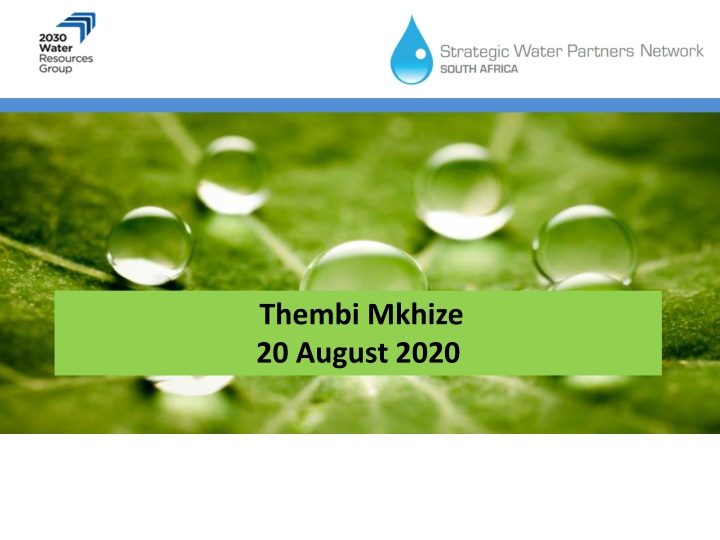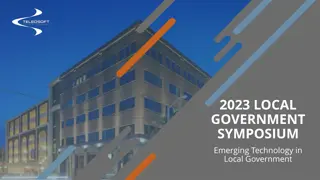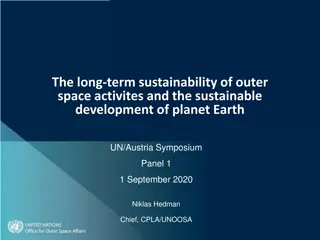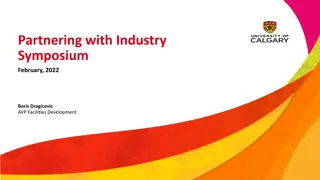
Sustainable Water Use in Agriculture: Solutions for Water Management
Explore the Strategic Water Partners Network's efforts towards sustainable water use in agriculture, focusing on efficiency, leakage reduction, and promoting access to resilient sanitation solutions. Learn about the challenges of water resource management in agriculture and the importance of innovative solutions in the face of climate change.
Download Presentation

Please find below an Image/Link to download the presentation.
The content on the website is provided AS IS for your information and personal use only. It may not be sold, licensed, or shared on other websites without obtaining consent from the author. If you encounter any issues during the download, it is possible that the publisher has removed the file from their server.
You are allowed to download the files provided on this website for personal or commercial use, subject to the condition that they are used lawfully. All files are the property of their respective owners.
The content on the website is provided AS IS for your information and personal use only. It may not be sold, licensed, or shared on other websites without obtaining consent from the author.
E N D
Presentation Transcript
Thembi Mkhize 20 August 2020
Soil Fertiliser and Nutrition Symposium Sustainable Water Use in Agriculture/Water Management Under Climatic Stress 20 August 2020
Layout 1. 2. 3. 4. 5. 6. 7. About SWPN Sustainable Water Use in Agriculture Water Management Under Climatic Stress Adaptation strategies for water management under climate change Covid -19 Effect Post Covid-19 Catchment Water Footprint
Strategic Water Partners Network (SWPN) The Strategic Water Partners Network (SWPN) is a multi- stakeholder (public, private and civil society) partnership working collectively to close the gap between water supply and demand The vision is to contribute to efficient, equitable and sustainable water supply and access to water and sanitation for all South Africans through the identification and application of innovative and cost-effective solutions Image result for leaking water pipelines
Strategic focus areas Water use efficiency and leakage reduction Municipal and industrial water loss Polokwane Partnership project Development of skills for water sector Skills development and transformation Priority areas based on: Replicability Scalability Potential for public/ private engagement Potential to close 17% gap Effluent and wastewater management and Sanitation Municipal wastewater management and reuse. Promote access to resilient, cost effective and efficient sanitation solutions Agricultural supply chain Irrigation water use efficiency and promotion of equitable access Water stewardship Collective response to water risks through action and supportive policy
Sustainable Water Use in Agriculture World-wide there is an enormous challenge to produce almost 50% more food up to 2030, and double production by 2050 This will probably have to be achieved with less water, mainly - growing urbanisation, industrialisation and climate change Because agriculture is the major user of water(approx 70%) ,Farmers have to increase water use efficiency and improve water management. The scope of sustainable management of water resources in agriculture includes: The responsibility of water managers and users to ensure that water resources are allocated efficiently; Equitably and used to achieve socially, environmentally and economically beneficial outcomes Agricultural water resource management covers a wide range of agricultural systems and climatic conditions Future policies will be greatly influenced by climate change and climate variability, including seasonality problems climate change will lead to increased stress on already scarce water resources
Sustainable Water Use in Agriculture Cont. 1. Agriculture Water Management For Improving Crop Productivity To understand plant water use Quantifying crop transpiration and soil evaporation Allows us to devise strategies to improve crop production, Reduce unproductive water losses and prevent land and water degradation 2. Benefits of sustainable agriculture Maintaining soil quality, Reducing soil degradation Reducing erosion and saving water Increasing biodiversity of the area by providing a variety of organisms with healthy and natural environments to live in.
Water Management Under Climatic Stress South Africa's water scarcity could get rapidly worse as supply decreases and demands escalates due to : Growth, urbanization, unsustainable use, degradation of wetlands, Water losses and a decrease in rainfall due to climate change. Agriculture production is highly dependent on water and increasingly subject to water risks S.A rainfall is highly variable in spatial distribution and unpredictable Factors that contribute to vulnerability in water systems include high runoff and evaporation rates. Climate change is expected to alter the present hydrological resources and add pressure on the adaptability of future water resources; Development goals, such as those related to food and water, can be seriously impeded by climate impacts
Adaptation strategies for agricultural water management under climate change Strategies that are designed to address climate variability and change are the responsibility of the government and private sector, especially if they include poverty alleviation and job creation. 1. Supply side management strategy 1. Water resource planning (Water supply side) National Water Resource Strategy (NWRS) to address the management of the water resources to meet the development goals of the country key objectives is to identify areas of the country where water resources are limited and constrain development as well as development opportunities where water resources are available. Conjunctive use of surface and groundwater 2. Rainwater harvesting 3. Reduction of leaks 4. Control of invasive alien vegetation 5. Improved monitoring and forecasting systems for floods and drought
Adaptation strategies for agricultural water management under climate change Cont. 2. Demand side management strategy 1. Water restrictions 2. Tarif structures 3. Dry sanitation systems, low-flow systems and duel flush toilets 4. Re-use of grey water 5. Leak reduction 6. Water education 7. Changes in agricultural management practices Adaptation strategies in the agricultural sector
Adaptation strategies for agricultural water management under climate change Cont. Changes in Crop Types Agri - Practises Adaption Strategies Planting Dates Conservation Tiling Use of drought resistant crop varieties Row Spacing Furrowing Crop diversification Planting Density Terracing Changing cropping patterns + planting calendar Countering Soil moisture conservation through tillage methods Planting Vegetation as windbreaks Improving irrigation efficiency Protect Fields from water erosion Afforestation + Agro Protect Fields from wind erosion by reducing evaporation + increase filtration
Covid-19 Effect The COVID scenario presents an unprecedented opportunity in this regard. States are using the present circumstances as an opening to clean house by getting rid of legacy bottlenecks in farm value chains Its time to look at water in agriculture as a unified problem with complex interlinkages In the current environment - impossible to look at any sector or scenario without applying the COVID lens. There is no evidence about the survival of the COVID-19 virus in drinking water or sewage, The scale of the COVID-19 disease in affected nations is making sure that nearly all available public/private resources are devising ways for mitigating the spread and minimizing its economic and human impact The US state hardest hit by COVID-19,New York, also had the highest daily water consumption at 21% And anticipate seasonal increases in water use for irrigation
The South African agriculture sector has the potential to be among the sectors that will drive economic growth and job creation during the post-Covid-19 recovery phrase. The path to realize this growth does not need new policies. Government should change agricultural development by using NDP as a point of departure. A renewed drive on the prioritization of joint venture models between the private sector and the government is now critical in bringing about development. JV models between private sector and government is critical in bringing about development Post Covid-19
Testing a catchment water footprint (WF) to inform sustainable irrigation water use for an aquifer under stress A catchment water footprint framework is proposed to manage agricultural water use Crop yields and water footprints are linked to quantify agricultural water use. The WF framework can be used to help set and meet sustainability targets.






















